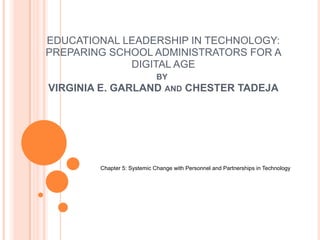This chapter discusses the importance of systemic change with technology through strategic partnerships and personnel. It emphasizes:
1) Analyzing student data to improve learning and guide changes
2) Partnering within the district and community to support innovative practices
3) Hiring and evaluating "tech-savvy" teachers and using technology to develop them.














